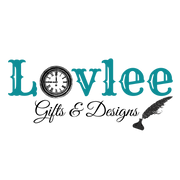Before the whir of a motor or the click of a presser foot, everything was stitched by hand... every seam, every buttonhole, every hem. For centuries, sewing was slow, meticulous work done by candlelight and calloused hands. Then came a machine that changed everything: the sewing machine.
Explore our vintage sewing machine collection
The Birth of an Idea
The dream of a machine that could sew dates back to the 18th century. In 1755, a German inventor named Charles Fredrick Wiesenthal was granted a British patent for a needle that could be used in a mechanical sewing device... but it never quite made it off the drawing board.
Fast forward to 1790, when English cabinetmaker Thomas Saint designed what’s considered the first real sewing machine. It was meant for leather and canvas, and though it was never built in his lifetime, his design laid the groundwork for what would follow.
The 1800s: When Innovation Took Off
The early 1800s were buzzing with inventors chasing the same goal. French tailor Barthélemy Thimonnier patented the first functional sewing machine in 1830. His machine used a hooked needle and one thread to make a chain stitch... and it worked. Unfortunately, his factory was burned down by angry tailors who feared it would put them out of work.
Then came the era of Elias Howe and Isaac Merritt Singer... the two names that truly made sewing machines household staples.
-
Elias Howe patented his version in 1846, which used a lockstitch design with a needle and shuttle... a huge improvement in stitch strength.
-
Isaac Singer, a savvy businessman, improved Howe’s concept by adding a foot pedal (the treadle) and making it easier for everyday people to use. He also pioneered the first payment plan, making sewing machines accessible to families who couldn’t afford to buy outright.
These innovations turned the sewing machine into an essential household tool. By the late 1800s, sewing machines were as common in homes as stoves and lamps.
The Golden Age of Sewing Machines (Early 1900s–1950s)
The early 20th century was the golden era for sewing machines. Companies like Singer, White, Wheeler & Wilson, Pfaff, and Jones dominated the market. Machines became sleeker, quieter, and even decorative... cast iron bodies, gold detailing, and ornate decals were common.
During the World Wars, sewing machines became indispensable. They helped create military uniforms, parachutes, and gear... while at home, women used them to mend, make, and stretch the family wardrobe.
After WWII, electric models took over. Brands like Singer, Brother, Elna, and Bernina led the pack with machines that had built-in motors, zigzag stitching, and new portability.
From Mechanical to Computerized: The Modern Age
By the 1970s and 1980s, the world saw the rise of computerized sewing machines. These models introduced automatic buttonholes, multiple stitch patterns, and precision speed control. Brands like Janome, Husqvarna Viking, Bernina, and Brother pushed innovation forward with microprocessor technology.
Today’s machines can do everything from quilting and embroidery to monogramming and even connect to Wi-Fi for pattern downloads. Some models can literally sew from a digital file.
Why Sewing Machines Evolved
The evolution of the sewing machine mirrors society’s needs and progress:
-
Industrial revolution → Speed and mass production.
-
Postwar domestic life → Home sewing and fashion creativity.
-
Digital era → Automation, precision, and creative freedom.
Through it all, one thing stayed the same... the sewing machine’s role as a bridge between practicality and art. Whether it’s repairing a hem, creating couture, or quilting a memory, the sewing machine keeps stitching history together.
Iconic Brands Through the Years
Here are a few of the standout names that shaped sewing history:
| Era | Notable Brands | Known For |
|---|---|---|
| 1800s | Singer, Howe, Wheeler & Wilson | First mass-produced home machines |
| Early 1900s | White, Pfaff, Jones, Frister & Rossmann | Ornate cast-iron beauties |
| Mid 1900s | Singer, Bernina, Elna, Necchi | Durable electrics, zigzag innovation |
| Late 1900s | Brother, Janome, Husqvarna | Computerized precision, embroidery |
| 2000s–Now | Bernina, Janome, Juki, Baby Lock |
Smart tech, digital patterns, quilting |
The Thread That Connects Us
Whether you’re restoring a vintage treadle Singer or threading up a modern Janome, you’re part of a long line of makers who’ve used machines to bring creativity to life. The hum of a sewing machine is more than just a sound... it’s a rhythm that’s stitched through centuries. Shop our vintage sewing machines
LovleeGD, also known as Lovlee Gifts & Designs, offers multiple shopping options so our customers can choose the platform they feel most comfortable using.
Find us on:
